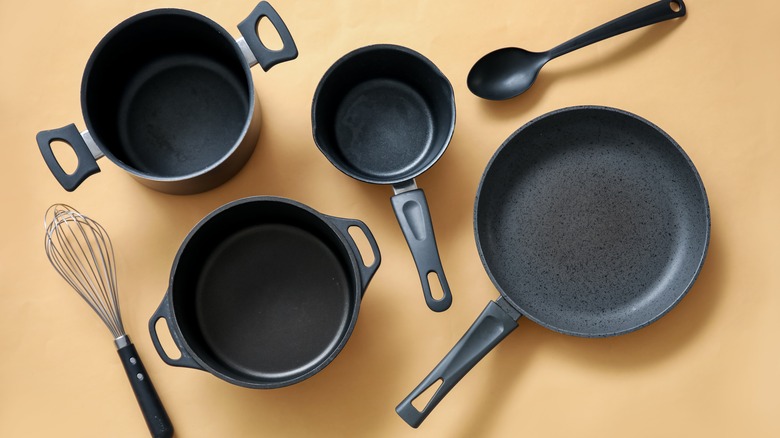Are Skillets And Frying Pans The Same Thing?
If you've ever wondered whether a skillet and a frying pan are different, here's the truth: they're exactly the same! It's kind of like referring to your specs as "glasses" or "spectacles." One might sound a bit more old-school, but they serve the same purpose, just like skillets and frying pans. Interestingly, the term skillet is more commonly used in southern areas of the United States, while frying pan is used more broadly in other regions. Don't let the regional language differences fool you — both names describe the same tool! Whether you're making bacon in Alabama or flipping eggs in New York, the trusty skillet (or frying pan) is your go-to for a wide variety of dishes.
A skillet, or frying pan, is a round, flat-bottomed pan with sloped sides, designed to make tossing and flipping foods easier. Typically ranging from 8 to 12 inches in diameter, skillets are ideal for tasks like frying, sautéing, and searing. The sloped sides help with evaporation, making them perfect for high-heat cooking, where you want to brown or crisp the food.
When you hear "skillet," some folks immediately think of a sturdy cast iron pan — famous for its durability and heat retention. Meanwhile, "frying pan" often conjures images of lightweight non-stick versions. But in reality, the shape and function are identical, whether it's made from cast iron, stainless steel, or aluminum. While the names can be interchangeable, differences in material and size make certain pans/skillets more optimal for specific dishes.
It's not the name, it's the material that matters
Since we've established that "skillet" and "frying pan" are the same, the real choice comes down to material. Prized for their unique heat retention, cast iron skillets are great for searing steaks, frying crispy chicken, or baking that Instagram-worthy cookie skillet. Cast iron's ability to move from stovetop to oven makes it versatile for dishes that need both methods. However, cast iron requires seasoning to stay non-stick and prevent rust.
On the other hand, non-stick frying pans excel at low-fat cooking, with their easy-release coating making delicate foods like eggs and pancakes a breeze. They're great for quick meals, but their coating can wear out over time, especially if exposed to high heat. Stainless steel pans, meanwhile, offer a happy medium. They don't have the non-stick convenience but are excellent for high-heat cooking like browning, sautéing, and deglazing. Stainless steel pans are durable, heat quickly, and, with proper use, can create a pseudo-nonstick surface if you preheat and oil them correctly.
Ultimately, whether you're frying fish in a non-stick, searing meat in stainless steel, or baking a gooey cookie in cast iron, the key isn't the name — it's the material that suits your cooking needs!

